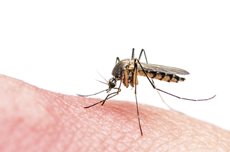Most Licking County Residents at Low Risk for Zika Infection
 Although the virus was relatively unknown in the U.S. prior to January, it was first identified in monkeys in the Zika Forest region of Uganda in 1947. The first human cases were documented in 1952 in Uganda and Tanzania. The virus was determined to be spread primarily through the bite of Aedes africanus mosquitos, and over the next five decades, it became common in many countries near the equator. Spread of the virus received little media attention since it usually caused minor (or no) symptoms. However, in 2015, Brazilian physicians suspected a link between pregnant women who contracted Zika virus and babies who were born with a serious neurological abnormality known as microcephaly. In addition, the virus was suspected to be linked to rare cases of Guillian-Barre syndrome that can affect members of both genders at any age.
Although the virus was relatively unknown in the U.S. prior to January, it was first identified in monkeys in the Zika Forest region of Uganda in 1947. The first human cases were documented in 1952 in Uganda and Tanzania. The virus was determined to be spread primarily through the bite of Aedes africanus mosquitos, and over the next five decades, it became common in many countries near the equator. Spread of the virus received little media attention since it usually caused minor (or no) symptoms. However, in 2015, Brazilian physicians suspected a link between pregnant women who contracted Zika virus and babies who were born with a serious neurological abnormality known as microcephaly. In addition, the virus was suspected to be linked to rare cases of Guillian-Barre syndrome that can affect members of both genders at any age.
Since January, many additional cases of Zika infection have been identified in the U.S., including some in Ohio and even Licking County. Nearly all those affected have been travelers who recently returned from equatorial countries where Aedes aegypt and Aedes albopictus mosquito are found. (Those mosquitos are not among the 65 types of mosquitos that are established in Ohio.) In February, cases of Zika infection were documented to have been transmitted by travelers who had visited equatorial regions and then, after returning to the U.S., spread the virus to sexual partners who had not traveled outside the country.
“Although the medical community still has a lot to learn about the Zika virus, there is no indication that it can be spread through casual contact, so the risk is low for Licking County residents who do not travel to affected countries,” stated Craig B. Cairns, M.D., M.P.H., Vice President Medical Affairs at Licking Memorial Hospital (LMH). “Our biggest concern is for pregnant women who have traveled to those warm-climate countries that the CDC has identified as regions of elevated risk. Pregnant women who recently traveled to those areas and are concerned should consult with their obstetrician.”
Most individuals who are infected with Zika virus do not become ill. If symptoms occur, they are usually mild and may include fever, rash, joint pain or conjunctivitis (red eyes) lasting up to one week. There is currently no vaccination available to prevent Zika infection, and treatment includes measures to relieve symptoms. The CDC advises that pregnant women should consider postponing travel to countries that have Zika outbreaks. For an up-to-date list of those counties, visit www.cdc.gov.
| Posted On : 3/9/2016 9:27:50 AM
Filed under: